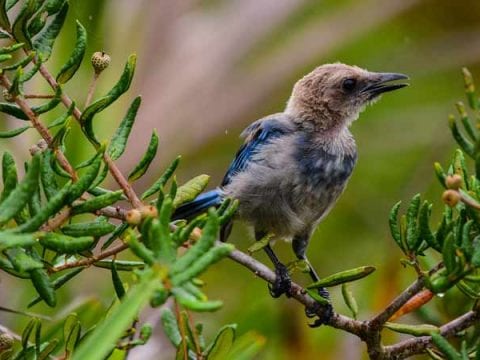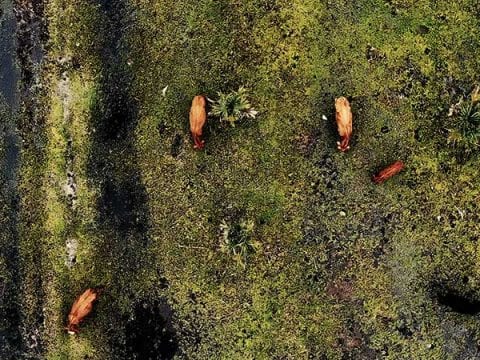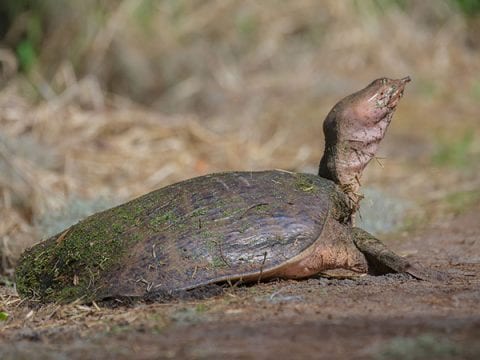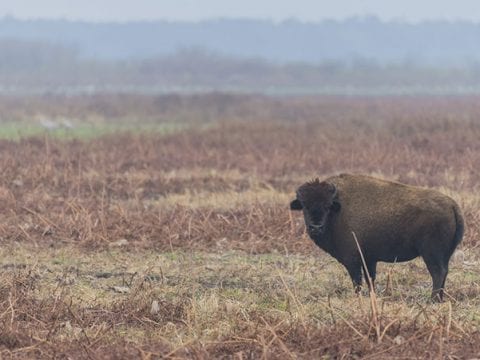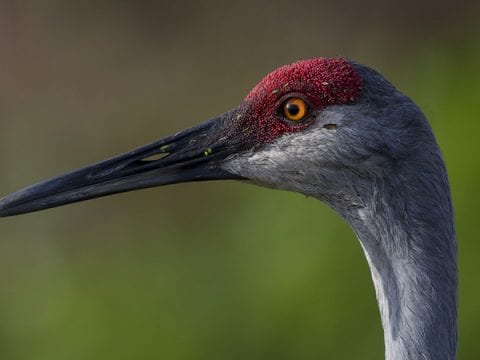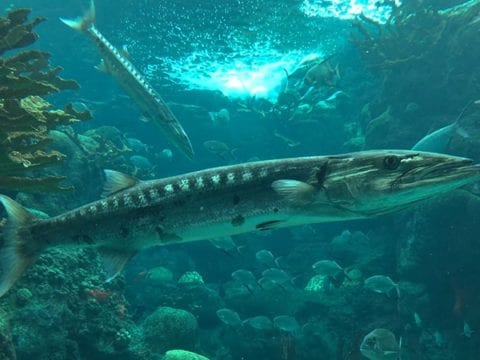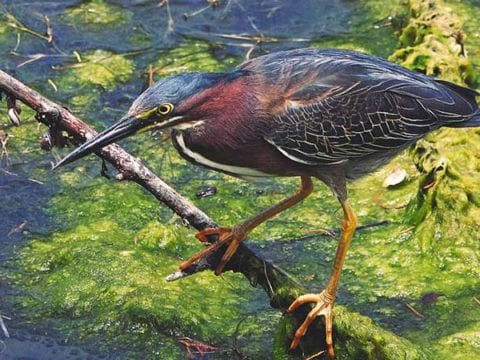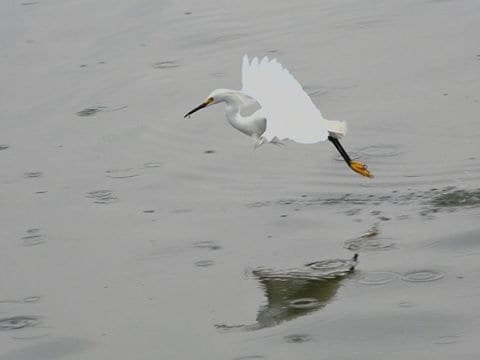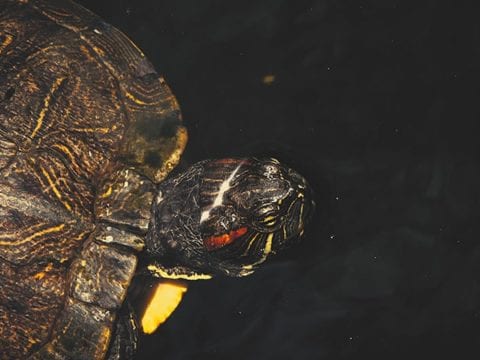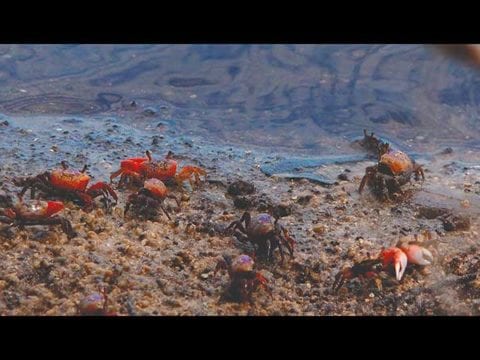Table of Contents
Rhesus Macaque Monkey Facts
- Wild Monkeys have a language of their own
- Rhesus Macaque Monkeys can be dangerous to humans as they can carry the possible deadly virus, herpes-B
- The virus can be transmitted through contact with bodily fluids, bits or scratches
- When a monkey is shaking a tree, it is a warning to stay back. They will also grunt, hand slap, head bob and yawn when they feel threatened. When this happens, don’t show them eye contact and allow them their space and they will most usually go on about their business.
- Female macaques rule their society
- It’s not unusual to find more than one male within a group as long there is no threat to the dominant male.
- Dogs can talk to monkeys. Actually, humans can too. It’s done through facial expressions and gestures, through body language. With both monkeys and dogs, their ears go back when they are angry and for humans, our brow is furrowed, our eyes dilate and our mouth draw forward. Dominant dogs and monkeys make themselves appear bigger and hold their tales high. When we smile, both monkeys and dogs see our mouths open and the corners go back which tells them that we are happy. They are able to read body language.
- A group of monkeys is called a troop.
- In India, Hindus regard wild monkeys as sacred and they leave them undisturbed to live peacefully
- These monkeys preceded humans into space and gave doctors the knowledge of different blood types in humans
- Rhesus monkeys can store food within their cheek pooch so that they can carry it, store it for later or protect if so that they can give it to their young
- Some people believe that the monkeys are on Silver River because they escaped from the film set of the classic Tarzan movie
- Silver River monkeys are very smart and self-aware and have shown that they really like looking at themselves in mirrors.
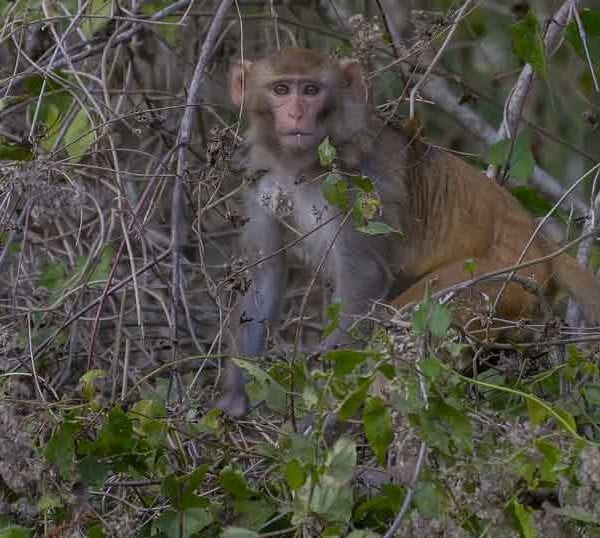
A wild monkey along the Silver River in Florida
Identification
Wild Monkeys, known as Macaques which come in 23 species of monkey, can be dangerous when it comes to humans since they carry the possible deadly virus, herpes-B. This virus can be contracted through the contact of bodily fluids, a bite or through scratches. Right now, no human has ever contracted the disease from free-range monkeys. Averagely, the disease has been transmitted to humans through clinical studies being done on the monkeys. This is through a process called shedding and this occurs when the monkey is stressed. However, wild monkeys that are seen roaming the forests of Florida are not usually stressed.
Monkeys have a language of their own. This comes through a series of coos, screeches, facial expressions, hand gestures, body language and even grunts. Picture this, you are sitting in your kayak, relaxing and rowing when you hear a loud series of rapid mid-pitched grunts. When you hear this and you look toward the monkeys, you’ll see that they are all facing the same direction. They want to alert you to something dangerous, possibly even an alligator swimming nearby.
Macaques live within a multi-female, multi-male called a matrilineal society in which the females rule. A dominant female who has the highest rank rules and that leadership moves down to each of her sisters. However, each dominant female baby outranks the closest ranked sister and the same with the baby’s baby and so on. The youngest of the dominant female’s babies will have the highest rank on the oldest of offspring. The males however, are at a lower rank. When they are four years old, they are forced to leave the group to meet up with other males who have been ostracized from their own groups. However, the male offspring will rank higher than the next highest ranked female from a group. There can be multiple males in a group but there is only one dominant male and he must not feel threatened by any of the other males. While like in many cases where the male role is to continue their bloodline and this obviously happens among monkeys, it is not the primary role of a dominant male. Females can and do find other males outside the group to breed with. The dominant males primary objective is for protection and due to their huge fangs and very powerful and agile bodies, they can do the job very effectively.
Within Florida, there is a batch of monkeys that have formed a society on the Silver River and they are referred to as the Silver River monkeys. They are quite an attraction for people and they draw much attention. One question that people ask most often is if they are dangerous or not. For the most part, the answer is no. However, just like any animal, they can bite if they feel they are being threatened or if they are provoked. As long as they are respected and given their space, there is absolutely no reason they would bite anyone. With monkey’s however, they also can bite if they are being stared at, especially if eye contact is being made. It is viewed as a threat. As far as the virus goes, monkeys have to be stressed to transmit the virus and typically, only captive monkeys feel stressed which weakens their immune system enough for the virus to start shedding.
The Silver River monkeys eat on vegetation through the lush forest that they live in which consists of seeds, nuts, leaves, fruits, roots and more. They are omnivores so they also eat dirt and insects, spiders being one of their favorites. Long-jawed orb-weaver spiders can be found along the riverbanks. They can store a lot of food in their cheek pooches, which they tend to do so they can have food for later.
They are very smart monkeys and are self-aware, which is only observed in monkeys with high intelligence. When a mirror was used with the monkeys, they recognized themselves and began to examine parts of their body. During some instances, they even began to adjust the mirror for a better view of themselves.
Silver River monkeys, known as Rhesus monkeys, a Macaques species averagely live 4 years in the wild. Head to body, they are 17-25 inches in the length and their tail adds another 7 to 12 inches. They weigh 8-26 pounds. When they are seen in a group, it is referred to as a troop of monkeys. They are brown with red faces and rear-ends. Close-cropped hair can be seen around their faces which tends to accentuate their overly expressive faces. They are Asian, known as Old World monkeys and they can be found all over the world including Southeast Asia, China, India, Pakistan and Afghanistan. They can adapt to many different habitats and can even become accustomed to living in human communities.
These monkeys live in noisy and active troops that can include up to 200 animals. They are very good climbers and swimmers but spend a lot of time on the ground too. While males are averagely the more dominant sex, they do not stay with the troop full time and so the dominant female takes over the leadership of the troop. Troops include both males and females and therefore the community is sexually promiscuous. Female monkeys usually produce one offspring per year, which is raised by its mother in the social environment of the troop.
Rhesus monkeys have been very important to scientific and medical research. Due to the Rhesus antigens found within their blood, doctors have been able to identify the different human blood groups. They also preceded humans in to space.
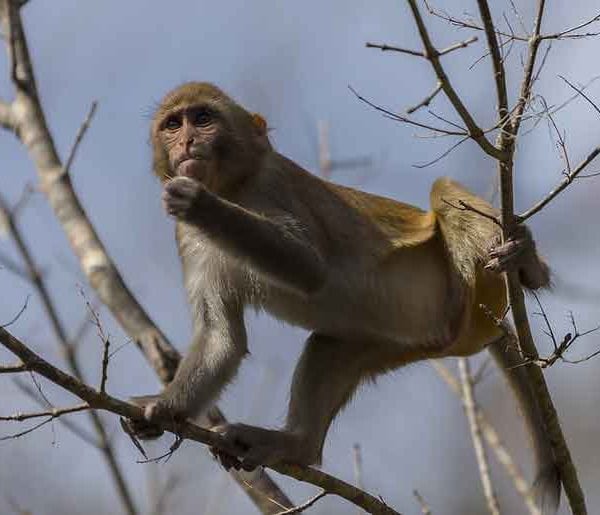
A wild monkey I saw that had climbed a tree along the Silver River in Florida.
History Of The Monkey In Silver Springs State Park
Rhesus macaques have inhabited Silver Springs State Park in Ocala, FL for more than 75 years. State records show that recently, in 2011, a photograph was taken of a monkey in Orange County on the Wekiva River near Rock Springs Run. History shows, that these monkeys were brought to Ocala and the Silver River via a tour boat operator, Colonel Tooey during the 1930’s. They were bought from a New York wildlife dealer who were initially brought to an island on the Silver River. They swam across the river to the nearby woods however and began to thrive there.
Colonel Tooey had a tour boat ride called “Jungle Cruise” which was made of up paddle boats owned by the Hart Boat Line. He believed that a live exhibit of monkey would increase his earnings and so he purchased two pairs of adult monkeys from the carnival in New York and built an island on a river known as “Monkey Island”.
The story seems legit but some seem to think that the monkeys escaped during the filming of the classic movie, Tarzan.
By 1963, documents show that these monkeys had grown in population to 78 rhesus macaques. Between 1998 and 2012, a trapper who was working under state permits reported the capture of 772 monkeys. These captured monkeys were sold to a biomedical research facility. However, due to the public outcry of society, the practice ended. Tooey was told that the monkeys would and could not swim and therefore it was believed that the monkeys would stay on the island and be completely isolated to it. They did not. They are actually really good swimmers and they swam to the banks of Silver River. Over the years, the monkeys were not breeding as Tooey had hoped so he released six more Rhesus monkeys that he bought from a supply house in New York. These monkeys were released on the north side of the river in about 1948. Another smaller release went down in history in 1962.
Preservation
The question has been asked for many years now, should the monkeys be eliminated from the Silver River? When it comes to Florida parks, monkeys are not the only animals that are deemed as hazardous. Alligators are all over the state of Florida. So are racoons. Bats are seen in vast numbers. Mosquitos, possibly the most hazardous come in overwhelming numbers as well. Ticks, fire ants, and poisonous snakes are also hazardous animals that roam freely over the state of Florida. Many parks do not contain Rhesus monkeys but why should they be deemed as hazardous of removed from their home when so many other hazardous animals are not. These monkeys have made Silver River their home from the 1930’s. They did not ask to be brought there but they have adapted to it over the years.
Alternatively, monkeys are not indigenous to Florida and as part of Florida’s general rule, non-native species of both animal life and plant life are not “welcome”. The state does not like to introduce non-natives to their ecosystem. This is not as bad as it sounds. Many species have become extinct because a new animal or new plant life was introduced which brought a deadly illness with it. However, these monkeys have been on the Silver River since the 1930’s so the chances of them wiping out plant life or other animals is a miss. Other than spiders and small insects, which they seem to love. Yet, that is the circle of life, also.
Silver River monkeys will not allow their population to grow outside what their environment can support. Their heritage on Silver River should be protected, it should be preserved. They are the only free-range population of Rhesus monkeys in the United States. Another colony like theirs cannot be seen anywhere else in the United States. They are very valuable to our history but they are also very valuable in a monetary viewpoint since people will pay to see them. Tourist revenue has increased in the area of Silver River due to these monkeys. They are also great for universities for studying purposes as researchers do not have to travel overseas.
For all of these reasons, it’s important to allow these monkeys to stay on Silver River. It is their home. Their heritage should be preserved and protected as part of Florida’s history.
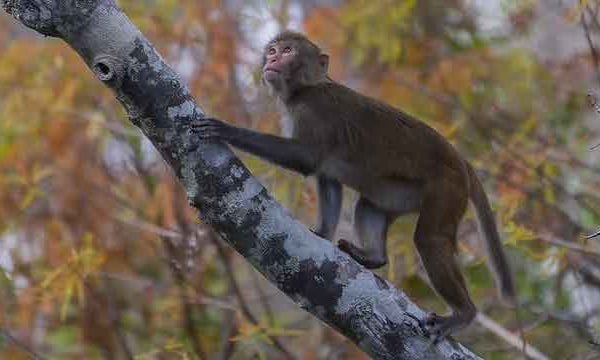
One of the monkeys climbing a tree along the river.
Where Can Wild Monkeys Be Seen
Rhesus monkeys, native to Asia can be seen on Silver River in Central Florida. New sightings however have been reported in Lake County, according to biologists at the University of Florida. They have also been spotted in Lady Lake and The Villages, which is about 20 miles south of the park.
In November, a tan-colored monkey was seen on the rooftop of The Villages Elementary of Lady Lake as children were being dismissed from school. The monkey simply paced back and forth atop the roof as parents began snapping shots of him/her. However, as the crowd grew the monkey scurried off into the woods.
Due to the reported monkey sightings in recent months in Lady Lake and The Villages, it is becoming increasingly aware that the monkeys are expanding.
Bob Gottschalk, a biologist who lives in The Villages has spent 8 years studying the moneys on Silver Springs on a weekly basis. He has given group leaders name such as “Cauli” and “King Phillip.”
Gottschalk said, “I suspect that there are some monkeys that have spread out of the national forest, and it’s not unreasonable to think they’ve gone down to Lake Griffin. Once you get that far south you get into Lake County.”
According to Gottschalk, these monkeys do not travel solo which could mean that if one is seen alone that it could be a male searching for his new group. It is advised not to get close to them but people are doing so anyways. They can become very aggressive and hostile. When people do not know how to react around a monkey, it can lead to doing something the monkey would find as very threatening and they may attack. This can lead to an outcry that the monkey is dangerous. However, not being educated about the monkey and approaching the animals anyways is what is dangerous. Monkeys just naturally flow in life, they aren’t malicious beings.
While it can be very exciting to see a monkey out and about, it is discouraged to try to feed them. While some monkeys will eat right out of a person’s hand, it is not something that researchers and zoologists suggest doing. People seem to think that since animals will eat from your hand then they must be tame and this is just not true. Aside from the dangers that it poses to a human, the monkey can be at risk as well. They are put at risk from their troop who will fight over food. This can lead to serious injury and even death within the monkey troop. It is best not to feed wild animals, period.
The population of monkeys that can be seen on Silver River throughout the years has fluctuated but within the last four years, the numbers have stayed pretty much the same with only a slight decline of less than 100 monkeys.
“There’s no other place in the world as unique as the monkeys on the Silver River. They’re living about as natural as they are anywhere else in the world,” Gottschalk said.

